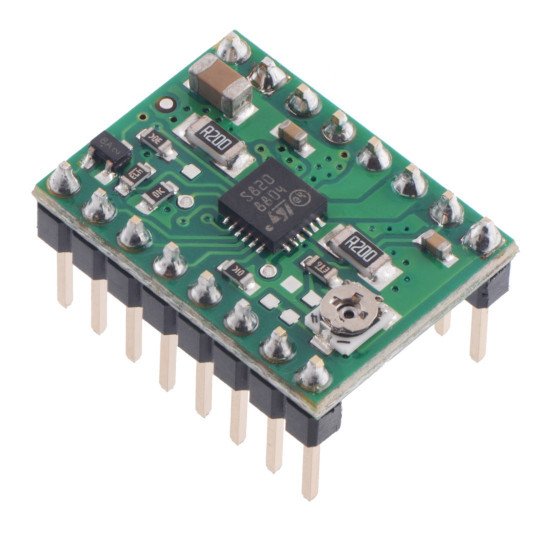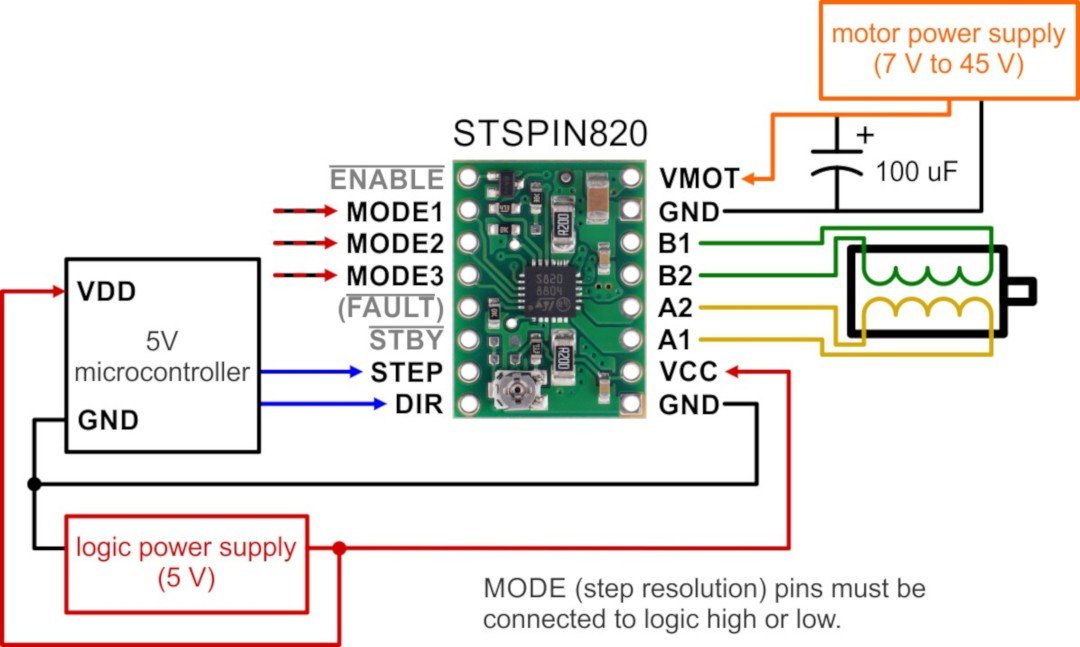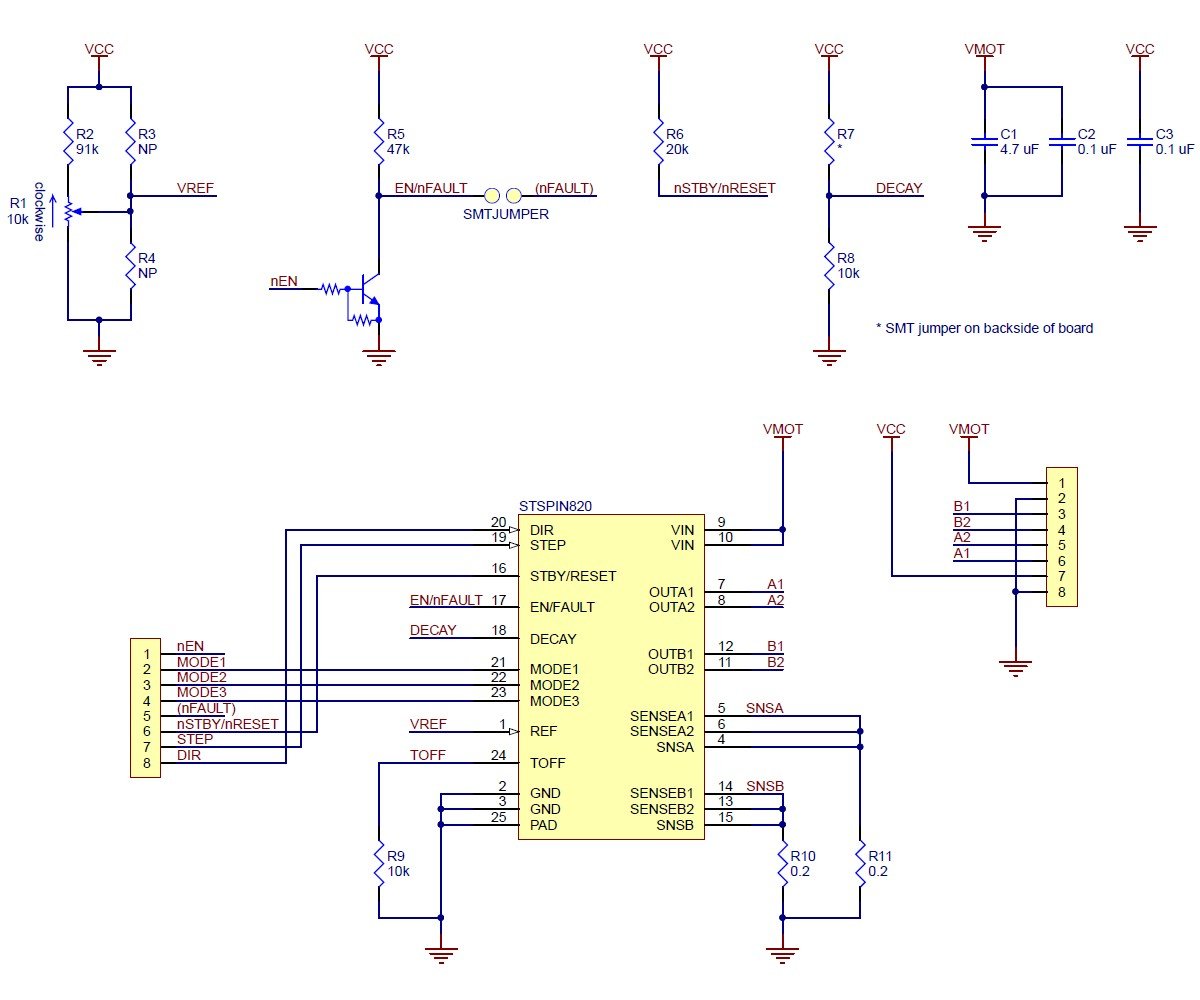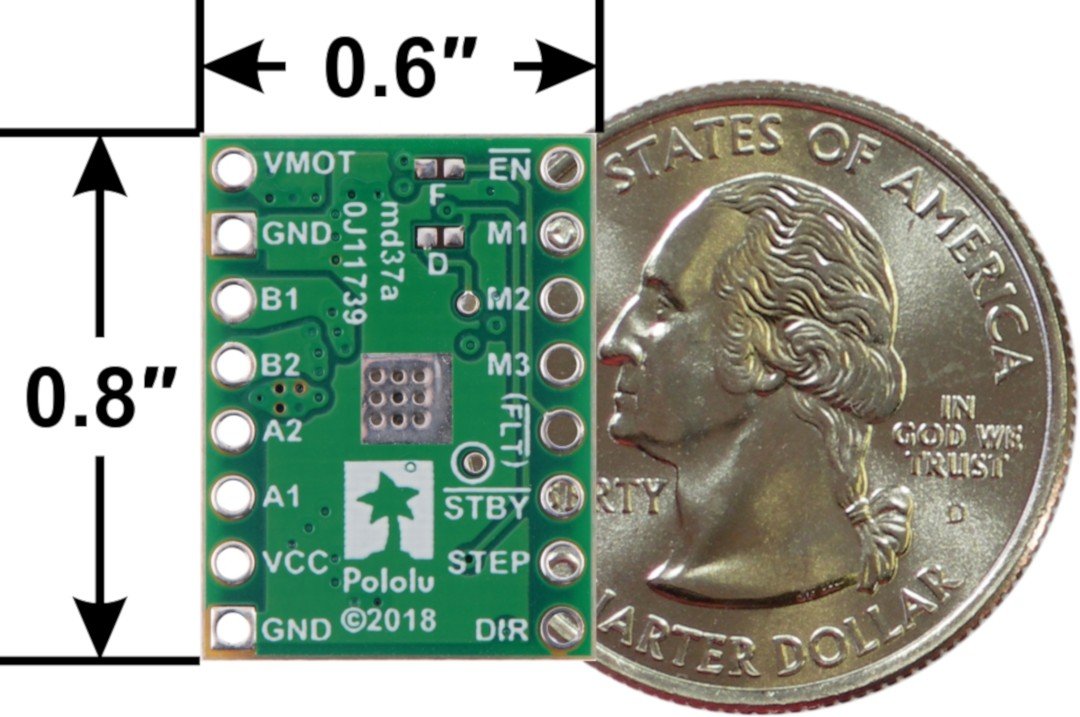Product description: STSPIN820 - 45V / 0,9A stepper motor driver - with connectors - Pololu 2879
The module based on theSTSPIN820driver allows to control a bipolar steppermotorwith the maximum current consumption up to 0,9 A per coil without additional cooling (momentary up to 1,5 A). It is powered from 7 V to 45 V. We recommend that you read theSTSPIN820driverdocumentationbefore use. Below are some of the main features of the product:
- The module features asimplestep and directioncontrol interface
- Has theability to operate in 8 modes: full-step, half-step, 1/4-step, 1/8-step, 1/16-step, 1/32-step, 1/128-step and 1/256-step
- Providescontrol of the maximum motor currentvia apotentiometer, allowing you to use a higher than rated supply voltage for the motors, so you can achieve higher step speeds
- Motors can be poweredfrom 7 V to 45 V
- Current consumptionup to 0.9 A(1.5 A momentary)
- Thanks to the integrated voltage regulator, the user does not need to supply additional power to the logic part.
- STSPIN820works with systems with logic part voltage of both3.3 V and 5 V.
- It has protectionagainst overcurrent, overtemperature and short-circuit.
- In order to increase heat dissipation surface the board was made in 4-layer technology with thicker copper cover
- Exposed ground area on the bottom for soldering the cooling elements
- The module is compatible, in terms of size and pinout, with the chip based onA4988driver
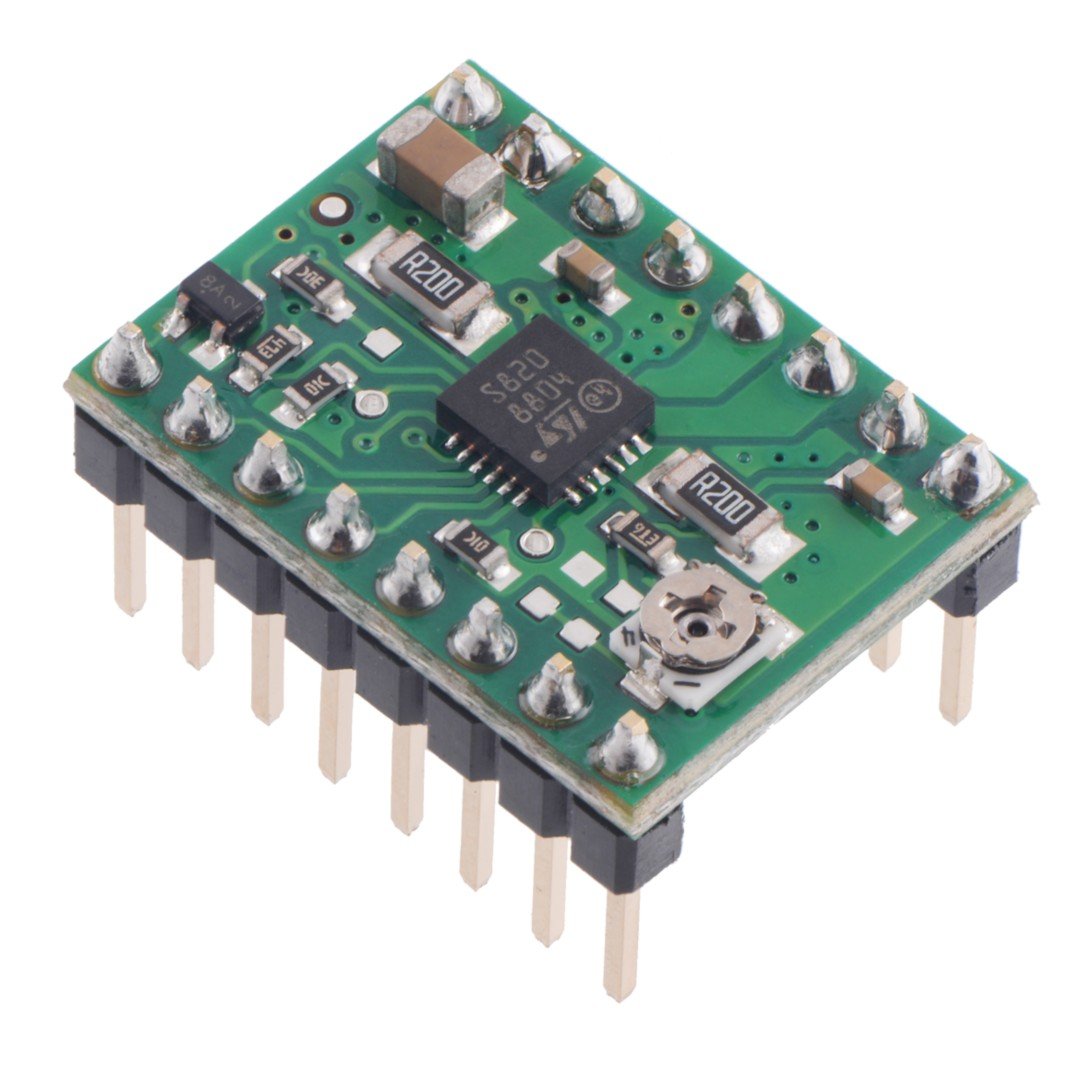
STSPIN820 stepper motor driver 45 V / 0.9 A - with Pololu 2879 connectors.
The module has soldered pins. Aversion withoutpins is also available in our offer.
Controller connection
To control a bipolar stepper motor, connect the system according to the drawing below. The driver allows also for working with some unipolar motors, details are in themanual.
| MODE0 | MODE1 | MODE2 | Resolution |
| Low | Low | Low | Full step |
| High | Low | Low | 1/2 step |
| Low | High | Low | 1/4 step |
| High | High | Low | 1/8 step |
| Low | Low | High | 1/16 step |
| High | Low | High | 1/32nd step |
| Low | High | High | 1/128th step |
| High | High | High | 1/256th step |
Controlling
One pulse applied to the STEP pin causes one motor step in the direction selected by applying the appropriate logic state (high or low) to the DIR pinout. STEP and DIR pins are not internally pulled up. Ifthe motoris to spin in one direction only, the DIR pin can be permanently connected to VCC or GND.
The STSPIN820 has two different inputs to control the power status, STBY / RESET and EN / FAULT.
- when STBY pin is connected to low state, controller enters low power mode and disables controller outputs
- ENABLE pin by default is pulled to low state enabling the module, it can also disable the outputs.
TheSTSPIN820controllercan detect errors by setting the EN/FAULTpin to low.FAULT is not available by default to maintain compatibility with the A4988 module. It can be obtained by bridging the jumper marked F on the back of the board.
A microstep controller such as the STSPIN820 allows the motor to operate with a high resolution of up to 1/256th of a step. The step size is selected using the MODE1, MODE2 and MODE3 inputs - the available modes are shown in the table below. By default, all three leads are in float mode, so they must be connected to VCC or GND.
Power supply
The chip can be supplied with voltage from 7 V to 45 V connected between VIN (+) and GND (-) pins. The voltage should be filtered by an external capacitor placed as close as possible to the controller board. Its capacity depends on the maximum current drawn by the motor.
Attention!
In certain conditions, even a relatively low supply voltage can cause spikes (voltage spikes) with a high amplitude, exceeding the permissible value of 45 V. Such a situation leads to permanent damage to the system. One way to avoid this problem is to place a capacitor (at least 47uF), as close as possible to the VIN and GND pins of the controller module.
Connecting and disconnecting the motor while the controller is on can damage the system.

STSPIN820 - 45V / 0,9A stepper motor driver - with connectors.
Current limitation
To maintain a high switching speed of the steps, a higher motor supply voltage than the nominal one can be used. You just need to limit the maximum current flowing through the coils to the motor catalog value.
The module allows you to actively limit the current using a potentiometer. One way of limiting is to set the controller to full step mode and measure the current flowing through one coil without providing a signal to the STEP input. The measured current is 100% of the set limit (both coils are always on and limited to 100% in full step mode).
Another way is to measure the voltage on the VREF pin (marked with a circle on the PCB) and calculate the current limit). The current limit can be calculated from the formula:
Current Limit = VREF ×5
Schematic diagram
The circuit contains the necessary passive components for proper operation ofthe controller. The circuit diagram is shown in the figure below.
Stepper motor driver specification
- Driver: STSPPIN820
- Supply voltage: 7 V to 45 V
- Continuous current per coil: 0,9 A
- Maximum instantaneous current per coil: 1,5 A
- Supply voltage for logic part: 2 V to 5.5 V
- Resolution: 1, 1/2, 1/4, 1/8, 1/16, 1/32, 1/128 and 1/256 steps
- Current limitation: built-in potentiometer
- Reverse polarity protection: none
- Soldered pins: yes
- Module dimensions: 20 x 15 mm
- Weight: 1.4 g
